Q. Walk me through a DCF model.
The most common variation to the DCF is the unlevered DCF approach, which is built using the following steps:
- Forecast Free Cash Flow to Firm (FCFF) → In the first step, the FCFFs of the company are projected for a five to ten-year time span.
- Calculate Terminal Value (TV) → In the next step, the value of all the projected FCFs beyond the initial forecast period (i.e. the explicit forecast period) is calculated, and the resulting amount is called the “terminal value”. The two approaches for estimating TV are the 1) Growth in Perpetuity Approach and the 2) Exit Multiple Approach.
- Discount Stage 1 and 2 Cash Flows to Present Value (PV) → Since the DCF values a company as of the present date, both the initial forecast period (Stage 1) and terminal value (Stage 2) must be discounted to the present using a discount rate, which is the weighted average cost of capital (WACC) in an unlevered DCF.
- Move from Enterprise Value (TEV) to Equity Value → Once both parts have been discounted, the sum of both stages equals the implied enterprise value of the company. Then, to get from the enterprise value to the equity value, net debt and other non-equity claims must be subtracted. In order to calculate net debt, the sum of all non-operating assets such as cash or short-term investments is subtracted from the total value of debt. In addition, any non-equity claims such as non-controlling interests (NCI) must also be accounted for.
- Implied Share Price Calculation → To arrive at the DCF-derived value per share, the equity value is then divided by the number of shares outstanding as of the current valuation date. But it is important to use the diluted share count, rather than the basic share count, as any potentially dilutive securities must be considered.
- Perform Sensitivity Analysis → Considering how sensitive a DCF model is to the assumptions used, the final step is to create sensitivity tables (and a scenario analysis) to assess how adjusting the assumptions impacts the resulting price per share.
Q. What are the advantages and disadvantages of the DCF approach?
| DCF Advantages | DCF Disadvantages |
|---|---|
|
|
|
|
|
|
Q. Conceptually, what does the discount rate (WACC) represent?
The discount rate in a DCF model adjusts the value of future cash flows downward because of the time value of money (TVM), i.e. a dollar today is worth more than a dollar received in the future.
More specifically, the discounted rate – or WACC in an unlevered DCF – represents the expected return on investment (ROI) given its risk profile.
Therefore, the discount rate is a function of the riskiness of the cash flows since potential returns and risk go hand in hand.
In practice, the discount rate is the minimum return threshold (i.e. the hurdle rate) of an investment based on comparable investments with similar risks.
- Higher Discount Rate → A higher discount rate makes a company’s cash flows LESS valuable since it implies there is MORE risk.
- Lower Discount Rate → A lower discount rate causes a company’s future cash flows to be MORE valuable because there is LESS risk.
Q. What is the difference between free cash flow to firm (FCFF) and free cash flow to equity (FCFE)?
Free cash flow to firm (FCFF), or unlevered FCF, is the cash flow generated from a company’s core operations after accounting for all operating expenses and investments.
To calculate FCFF, the following steps are used:
- The starting point is operating income (EBIT), an unlevered profit metric as it excludes interest expenses and other payments to lenders.
- EBIT is tax-effected to calculate a metric called net operating profit after taxes (NOPAT).
- From NOPAT, non-cash items like depreciation and amortization are added back, as well as other adjustments such as for changes in net working capital (NWC).
- Finally, capital expenditures (Capex) are subtracted to arrive at FCFF.
Free Cash Flow to Firm (FCFF) Formula
- FCFF = EBIT × (1 – Tax Rate) + D&A – Changes in NWC – Capex
On the other hand, free cash flow to equity (FCFE), or levered FCF, represents the residual cash flows for equity holders that remain once all payments to lenders like interest expense and mandatory principal repayment have been subtracted.
FCFE refers to residual cash flows that belong to solely equity owners, unlike FCFF which represents all capital providers (e.g. debt, equity).
To calculate FCFE, the following steps are followed:
- Calculate Cash from Operations (CFO) → The starting point is net income, rather than NOPAT. From there, non-cash items like D&A are added back and adjustments are made for changes in NWC. The calculated value is thus the cash from operations (CFO).
- Adjust CFO for Capex and Financing Activities → Capex is then subtracted and the cash inflows / (outflows) from new borrowings, net of debt repayments, is accounted for to arrive at FCFE.
Free Cash Flow to Equity (FCFE) Formula
- FCFE = Cash from Operations (CFO) – Capex – Mandatory Debt Principal Repayment
Q. What is the difference between the unlevered DCF and the levered DCF?
- Unlevered DCF → Under the unlevered DCF approach, the unlevered FCFs are the appropriate cash flows to forecast and the correct discount rate is the WACC, which reflects the riskiness to both debt and equity capital providers. The resulting value arrived at is enterprise value, which must be adjusted for net debt and non-equity interests to calculate the equity value.
- Levered DCF → The levered DCF approach projects FCFE and the appropriate discount rate is the cost of equity since FCFE belongs to only equity holders. Moreover, the levered DCF approach arrives at equity value directly. To calculate the enterprise value, net debt must be added back, along with adjusting for non-equity claims.
In theory, the levered and unlevered DCF approach should calculate the same enterprise value and equity value, yet the two are rarely precisely equivalent.
Q. What is the appropriate discount rate for the unlevered DCF?
For an unlevered DCF, the weighted average cost of capital (WACC) is the proper discount rate to use.
FCFFs are the cash flows that belong to both debt and equity providers, so FCFF matches with WACC.
The discount rate – i.e. the cost of capital – must reflect all providers of capital, both debt and equity, which the WACC does. Conversely, the cost of equity would be the right discount rate for a levered DCF.
- Unlevered DCF → WACC
- Levered DCF → Cost of Equity
Q. What is the formula to calculate the weighted average cost of capital (WACC)?
The weighted average cost of capital (WACC) is the opportunity cost of an investment based on comparable investments of similar risk/return profiles.
Calculating the WACC involves multiplying the equity weight (%) by the cost of equity and then adding it to the debt weight (%) multiplied by the after-tax cost of debt.
The cost of debt must be tax-effected since interest is tax-deductible.
The market values of equity and debt should be used, not the book values from the balance sheet – but in practice, the market value of debt rarely deviates far from the book value.
WACC Formula
- WACC = [Ke × (E ÷ (D + E)] + [Kd × (D ÷ (D + E)]
Where:
- E / (D + E) = Equity Weight %
- D / (D + E) = Debt Weight %
- Ke = Cost of Equity
- Kd = After-Tax Cost of Debt
Q. How can the risk-free rate be determined?
The risk-free rate (rf) should reflect the yield to maturity of default-free government bonds of equivalent maturity to the duration of each cash flow being discounted.
Since the government could hypothetically print more money to avoid defaulting, its issuances are considered to be “risk-free”.
The current yield on the 10-year U.S. Treasury notes is the most widely accepted and used proxy for the risk-free rate in the U.S., due to the limited liquidity in longer term maturities of Treasury bonds.
Q. How can the cost of equity be calculated?
The capital asset pricing model (CAPM) is the most common approach to estimating a company’s cost of equity. CAPM links the expected return to a company’s sensitivity to the broader market, most often the S&P 500.
CAPM Formula
- Cost of Equity (Re) = Risk-Free Rate + Beta × Equity Risk Premium
Q. What does the equity risk premium (ERP) represent?
The equity risk premium (ERP) captures the incremental risk (i.e. “excess” return) from investing in the equities market rather than risk-free securities like government bonds.
The ERP has historically ranged from around 4% to 6%, which is calculated based on the past spreads between the S&P 500 returns over the yields on risk-free bond issuances.
Equity Risk Premium (ERP) Formula
- Equity Risk Premium (ERP) = Expected Market Return − Risk-Free Rate
Q. Explain the concept of beta (β).
Beta measures the systematic risk of a security compared to the broader market, i.e. the non-diversifiable risk which cannot be reduced from portfolio diversification.
For example, a company with a beta of 1.0 would expect to see returns consistent with the overall stock market returns (S&P 500).
So, if the market increased by 10%, the company should expect to see a return of 10%.
But suppose a company has a beta of 2.0 instead; the expected return in such a case would be 20% if the market had gone up by 10%
Beta/Market Sensitivity Relationship
- β = 0 → No Market Sensitivity
- β < 1 → Low Market Sensitivity
- β > 1 → High Market Sensitivity
- β < 0 → Negative Market Sensitivity
Q. How is the cost of debt estimated?
The cost of debt, unlike the cost of equity, is readily observable in the market since it is the yield on long-term debt with equivalent risk.
If the company is not public and does not have publicly-traded debt, the cost of debt can be estimated using a “synthetic rating” using the default spread based on its credit rating and its interest coverage ratio.
Q. Is the cost of debt or the cost of equity typically higher?
The cost of equity is typically higher than the cost of debt – at least initially.
- Interest Tax Shield: The cost associated with borrowing debt (i.e. the interest expense) is tax-deductible, which creates a “tax shield” that reduces a company’s pre-tax income. In comparison, dividends are not tax-deductible.
- Priority of Claims: The cost of equity is also higher because equity investors are not guaranteed fixed interest payments and are last in line in the capital structure (i.e. they are lowest in the priority of recovery in the event of a forced liquidation).
Q. If the cost of equity is higher than the cost of debt, why not finance using entirely debt?
While it is true that the cost of debt is lower than the cost of equity, the benefits of debt capital tend to wane at a certain point where the risk of default and bankruptcy outweigh the benefits.
The “optimal” capital structure for the majority of companies should include a mixture of debt and equity.
Initially, as the proportion of debt in a company’s capital structure increases, WACC declines from the tax-deductibility of interest.
But once more debt is incrementally added to the capital structure – beyond a certain point – the risk to all company stakeholders increases (i.e. the WACC) because a highly levered company has a greater risk of default.
Eventually, the default risk offsets the tax advantages of debt, and the WACC soon reverses course as the risk to all debt and equity stakeholders increases.
Q. What are the two methods to calculate the terminal value (TV)?
There are two common approaches for calculating the terminal value (TV).
- Growth in Perpetuity Approach → The growth in perpetuity approach, or “Gordon Growth method”, calculates the TV by assuming a perpetual growth rate on cash flows after the explicit forecast period and then inserting this assumption into the static perpetuity formula. The long-term growth rate is the sustainable rate at which the company grows into perpetuity and typically ranges from 1% to 3% (in line with expected inflation).
Perpetuity Approach Formula
- Terminal Value = [Final Year FCF × (1 + Perpetuity Growth Rate)] ÷ (Discount Rate – Perpetuity Growth Rate)
- Exit Multiple Approach → The exit multiple approach calculates the terminal value by applying a multiple assumption on a financial metric (usually EBITDA) in the terminal year. The peer-derived multiple should reflect the multiple of a comparable company in a mature state.
Exit Multiple Approach
- Terminal Value = Final Year EBITDA × Exit Multiple
Under either approach, the terminal value represents the present value (PV) of the company’s cash flows in the final year of the 1st stage of the explicit forecast period (right before entering the perpetuity stage), so this future value (FV) must then also be discounted back to its present value (PV).
Q. What is the purpose of using a mid-year convention in a DCF model?
The mid-year convention treats the forecasted cash flows as if they were received at the midpoint of each period. If not, the implicit assumption of a DCF with the mid-year convention is that all cash flows are being received at the end of the year, which is flawed because cash flows are actually generated throughout the year.
As a compromise, the mid-year convention assumes the FCFs are received in the middle of the year.
For instance, if the discount factor for cash flows in Year 2 is 2, the mid-year convention would use 1.5 instead because half a year is assumed to have passed before the cash flow is generated.
Q. When would a DCF be an inappropriate valuation method?
The DCF method is most credible for mature companies with an established market position, business model, and market positioning, which have a historical track record (and years of financial reports) on which the model assumptions are based upon.
- Limited Financials → If access to a company’s financial statements is limited, the DCF approach is more difficult and a comps analysis would typically be the better option. Even with limited financial data, a comps analysis can still be performed, but a DCF model requires numerous assumptions that are directly based on historical financials, internal data, management commentary, etc.
- Unprofitable Start-Ups → DCFs can also be unfeasible for companies not expected to turn a profit (i.e. break-even point) for the foreseeable future, such as a pre-revenue start-up. Since such a substantial portion of the company’s value is weighted towards the future, the DCF loses credibility in these cases. For the DCF to be somewhat “credible” for a start-up, there must be at least a path towards becoming cash flow positive in the future. Even so, the accuracy of such a forecast is highly questionable, and the implied value will not hold much weight.

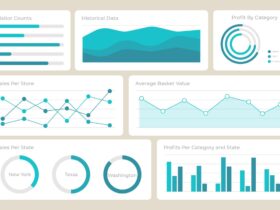
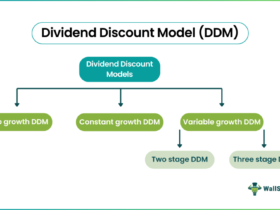














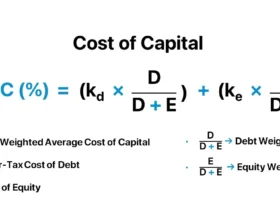

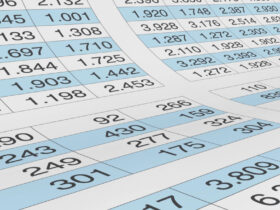
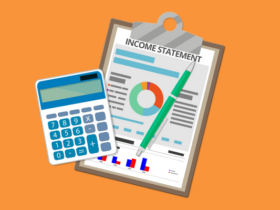

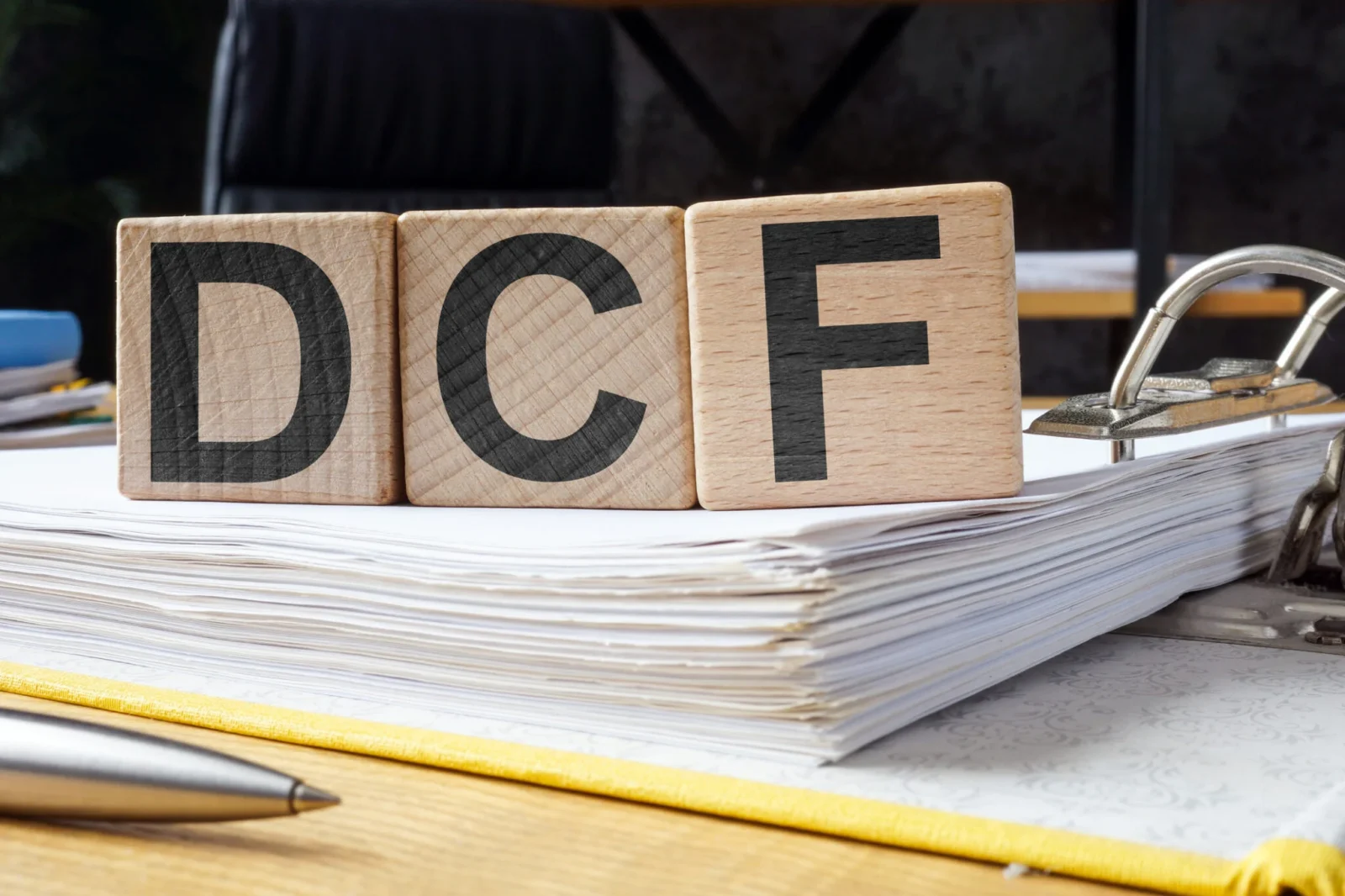

I like how this article explains both the advantages and disadvantages of the DCF method, very balanced.
The information about how to calculate FCFF and FCFE is very clear and helpful. Thank you for sharing.
I appreciate the detailed breakdown of the DCF approach, it makes it easier to understand.
The explanation of the difference between unlevered and levered DCF is really useful. Great article!
This is a very helpful and informative explanation of the DCF model, thank you!
I don’t think the title of your article matches the content lol. Just kidding, mainly because I had some doubts after reading the article.
Can you be more specific about the content of your article? After reading it, I still have some doubts. Hope you can help me.
Thank you for your sharing. I am worried that I lack creative ideas. It is your article that makes me full of hope. Thank you. But, I have a question, can you help me? https://accounts.binance.com/fr/register?ref=GJY4VW8W
Спасибо за “театральный” букет – получила овации!
заказ цветов томск с доставкой
Thank you for your sharing. I am worried that I lack creative ideas. It is your article that makes me full of hope. Thank you. But, I have a question, can you help me?
Thanks for sharing. I read many of your blog posts, cool, your blog is very good.
Can you be more specific about the content of your article? After reading it, I still have some doubts. Hope you can help me.
8sjz3b
ynj4f1
Your point of view caught my eye and was very interesting. Thanks. I have a question for you.
1win официальный сайт 1вин промокоды
Can you be more specific about the content of your article? After reading it, I still have some doubts. Hope you can help me.
Thanks for sharing. I read many of your blog posts, cool, your blog is very good. https://www.binance.info/register?ref=P9L9FQKY
?Te interesa un buen casino online con licencia espanola para apostar con dinero real? Yo tambien estuve en esa situacion hasta que encontre dinero real casino.
Este sitio me parecio una guia muy completa de mejores sitios de apuestas online donde puedes jugar sin riesgos. Algo que valore muchisimo fue que la pagina solo recomienda plataformas legales en Espana. Eso da confianza. Ademas, puedes jugar desde el movil. Yo juego desde Madrid y nunca tuve problemas de conexion.
?Bonos? ?Ni hablar! Las plataformas recomendadas ofrecen recompensas por primer deposito para que tengas mas fichas al comenzar. ?Prefieres ruleta? Los juegos no decepcionan. Desde tragamonedas con dinero real hasta baccarat clasico, todo esta ahi.
Los cobros es rapido. Yo recibi el dinero por transferencia y me llego en 24h. Asi debe funcionar un buen casino. Si buscas opciones locales, te recomiendo esta pagina. Ahi encontraras opciones fiables para apostar online en la actualidad.
Jugar con responsabilidad es fundamental. Y hacerlo en un sitio verificado es la prioridad.
Deja de buscar sin rumbo, echale un vistazo a los listados.
Thanks for sharing your thoughts on viraday tablet online.
Regards
Thanks for sharing. I read many of your blog posts, cool, your blog is very good.
I was reading through some of your articles on this internet site and I conceive this website is very instructive! Keep putting up.
Thank you for your sharing. I am worried that I lack creative ideas. It is your article that makes me full of hope. Thank you. But, I have a question, can you help me?
Thank you for your sharing. I am worried that I lack creative ideas. It is your article that makes me full of hope. Thank you. But, I have a question, can you help me?
2recxd
Your article helped me a lot, is there any more related content? Thanks!